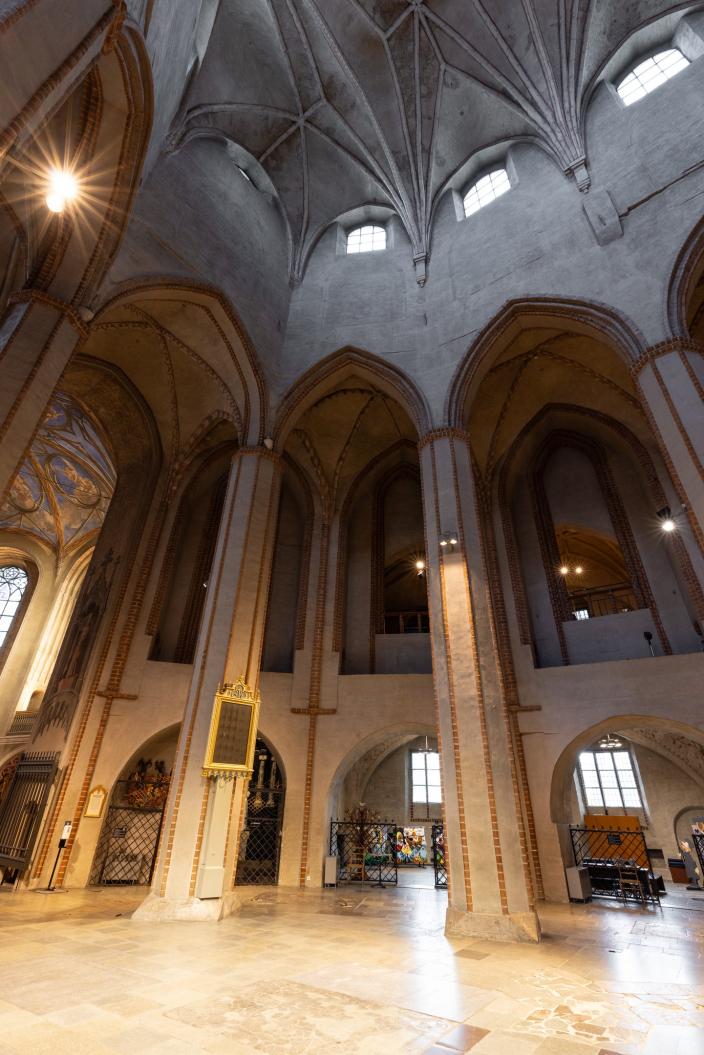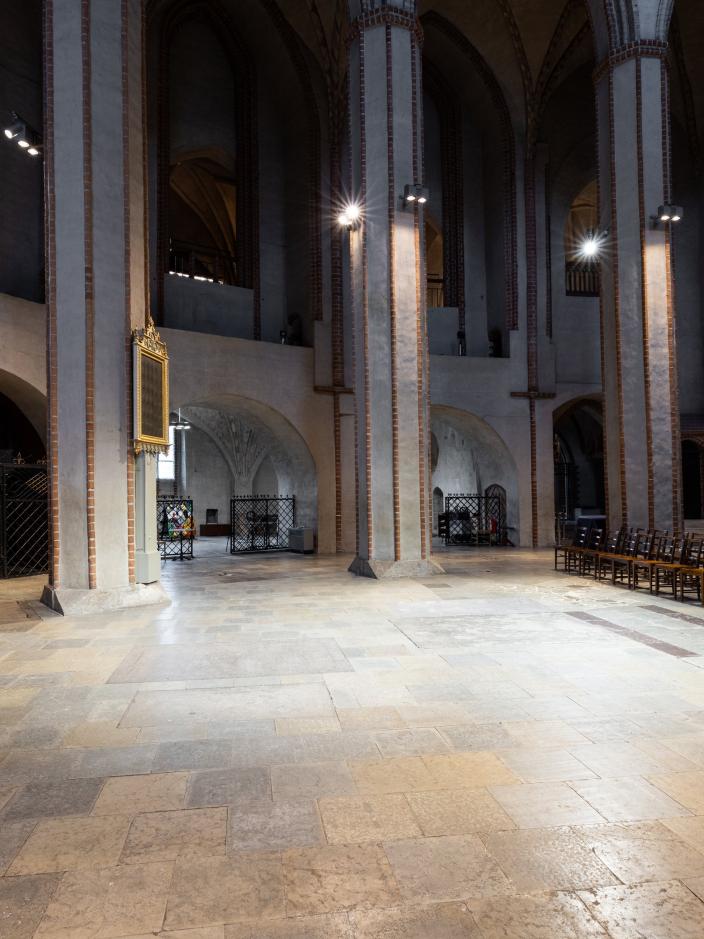Turku Cathedral will close its doors for the duration of the renovations, but after their completion, Finland’s only medieval cathedral will be even more accessible.
‘Did you know about the Cathedral’s sound window’, asks Dean Aulikki Mäkinen and directs me and the photographer to stand on a spot marked with a circular cut in the stone floor.
Mäkinen herself stands on the other side of the arch and talks to us in a whisper. The sound is astonishingly clear and loud even from several meters away. Consecrated in 1300, Turku Cathedral is full of similar surprises and secrets.
‘Not only is the Cathedral the centre of spiritual life and an actively used church building, it is also a cultural-historical treasure belonging to all of us that must be cherished’, Mäkinen says.
Renovations will meet many needs
The Cathedral is renovated every fifty years. The upcoming renovations will start in early 2026, and it will be completed in time for Turku’s 800th anniversary celebrations, at the end of 2028. In the meantime, the Cathedral is closed to the public.
‘In addition to the technical aspects of construction, the renovation must take into account accessibility and the continuum of historical construction’, Mäkinen describes.

Turku residents were asked for their opinions on the upcoming renovations. Some think that nothing should be changed, while others wished that the Cathedral would become more of a social meeting place and host a lot of events.
In addition to church ordinances, the Cathedral offers a place for concerts and art exhibitions, for example.
‘It’s an ongoing dialogue. How to preserve the Cathedral as a place of spirituality and silence, but also offer diverse cultural Christian content’, Mäkinen ponders.
One of the things that was requested most often was that the altar of the Cathedral would not be changed. However, the organ on the choir will now be moved to the side balcony. This allows guests to sit closer to the celebrants during certain church ordinances such as weddings and confirmations.
‘Many have requested that the guests could be more intimately involved in the ceremony instead of sitting far away in the pews.
New spaces
The Cathedral lobby will also be made more attractive down to the attendant’s desk. In addition, the upper floor of the sacristy previously closed to the public will be renovated for public use.
Various gatherings can be organised there, such as book discussion club meetings or club activities for children and young people.
‘Two elevators will be built to ensure accessibility, one inside and one near the outside wall to replace the old fire hose room. It is hidden from view, so the Cathedral’s facade will not change because of this’, says Mäkinen.
She also reminds us of the Cathedral’s more than 700 years of history and the perspective that time brings. Things may seem permanent from the perspective of an individual’s life, but in fact, many of the building technical solutions of the Cathedral are representative of their times.
The stone floor in front of the altar was constructed as part of the renovations done in the 1970s. The tiles have not been there since the Middle Ages, although you might think otherwise.
TEXT: HEIDI HORILA


